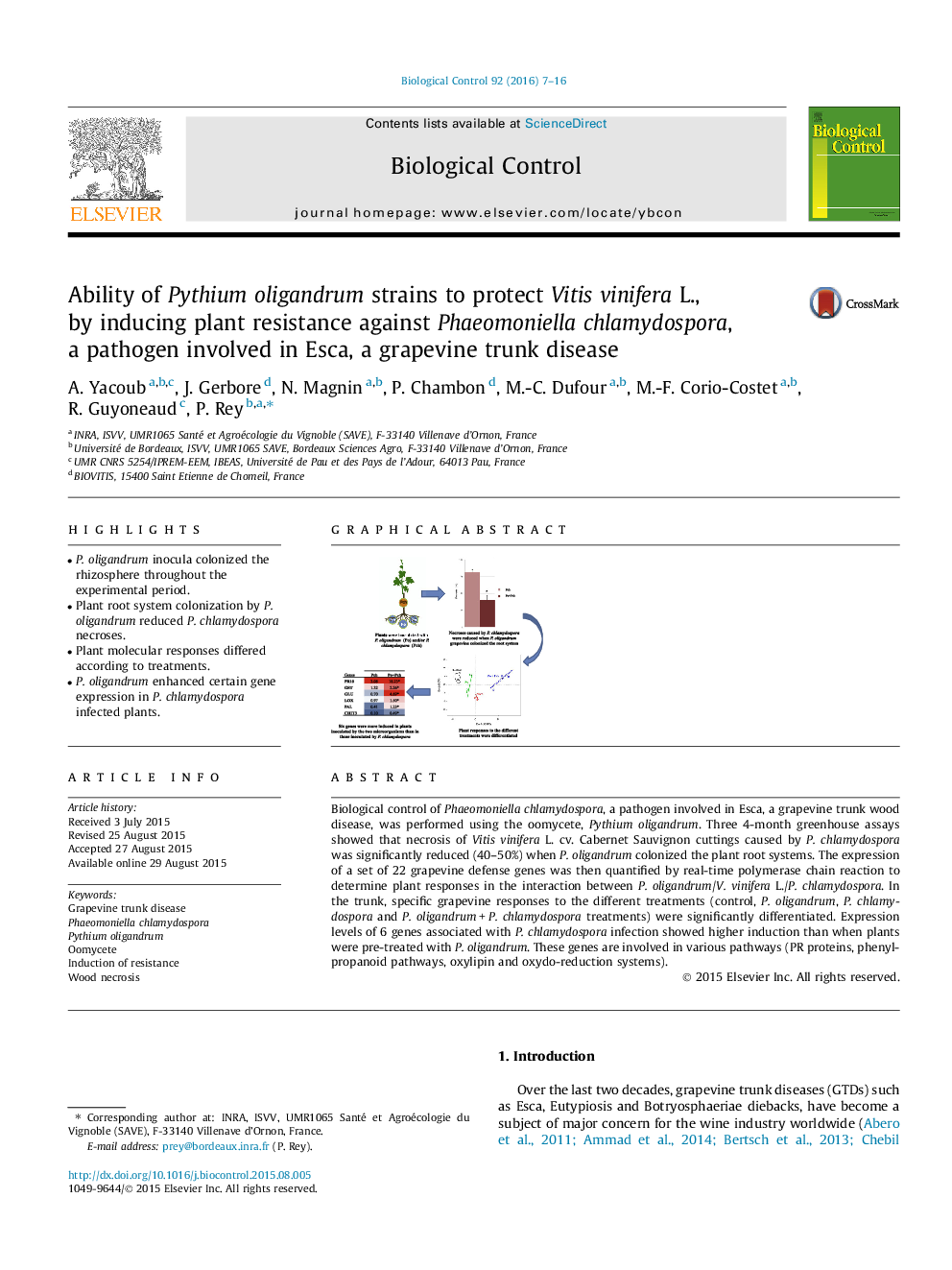| Article ID | Journal | Published Year | Pages | File Type |
|---|---|---|---|---|
| 4503700 | Biological Control | 2016 | 10 Pages |
•P. oligandrum inocula colonized the rhizosphere throughout the experimental period.•Plant root system colonization by P. oligandrum reduced P. chlamydospora necroses.•Plant molecular responses differed according to treatments.•P. oligandrum enhanced certain gene expression in P. chlamydospora infected plants.
Biological control of Phaeomoniella chlamydospora, a pathogen involved in Esca, a grapevine trunk wood disease, was performed using the oomycete, Pythium oligandrum. Three 4-month greenhouse assays showed that necrosis of Vitis vinifera L. cv. Cabernet Sauvignon cuttings caused by P. chlamydospora was significantly reduced (40–50%) when P. oligandrum colonized the plant root systems. The expression of a set of 22 grapevine defense genes was then quantified by real-time polymerase chain reaction to determine plant responses in the interaction between P. oligandrum/V. vinifera L./P. chlamydospora. In the trunk, specific grapevine responses to the different treatments (control, P. oligandrum, P. chlamydospora and P. oligandrum + P. chlamydospora treatments) were significantly differentiated. Expression levels of 6 genes associated with P. chlamydospora infection showed higher induction than when plants were pre-treated with P. oligandrum. These genes are involved in various pathways (PR proteins, phenylpropanoid pathways, oxylipin and oxydo-reduction systems).
Graphical abstractFigure optionsDownload full-size imageDownload as PowerPoint slide
